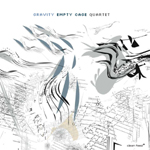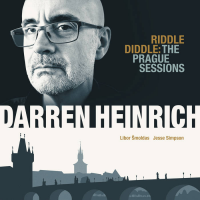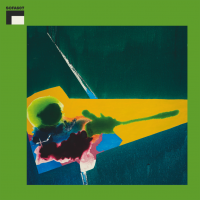Home » Jazz Articles » Album Review » Empty Cage Quartet: Gravity
Empty Cage Quartet: Gravity
The album consists of two extended compositions, which are broken into sections and alternated throughout the session. "Gravity" and "Tzolkien" rely on combinations of pitch palindromes and symmetrical harmonic and rhythmic sequences derived from calendar-based number series to yield an endless variety of thematic variations. Despite such meticulous frameworks, the written material is designed to provide additional avenues for group improvisation, which the quartet invests with the same freewheeling enthusiasm that has defined their oeuvre since their inception.
The Empty Cage Quartet, comprised of saxophonist Jason Mears, trumpeter Kris Tiner, bassist Ivan Johnson and percussionist Paul Kikuchi, has been building on the piano-less quartet innovations of Ornette Coleman and Anthony Braxton since 2003. Collectively, the members of the ensemble have studied with such luminaries as Wadada Leo Smith, Leroy Jenkins, Vinny Golia, Milford Graves and Charlie Haden—legendary artists whose individualism informs the group's singular aesthetic.
Although "Gravity" and "Tzolkien" may sound like formalist exercises on paper, in practice the quartet brings these labyrinthine pieces to life, investing contrapuntal melodies, cantilevered harmonies and compound meters with unflinching enthusiasm. Using the prescribed structure of each piece as a guide rather than a constraint, they range free and loose, bringing a raw, unfettered sensibility to the proceedings.
Fraught with harsh angles, stop-start rhythms and odd meters, these modular compositions defy simple analysis, yet never sound academic. Mears and Tiner wax opulent harmonies over Johnson and Kikuchi's calibrated undertow, with each member contributing equally to the quartet's intimate four-way conversations. Their approach to each section varies, veering from atmospheric introspection ("Tzolkien 1+13") and pensive pointillism ("Gravity: sections 5-7") to cascading torrents of sound ("Tzolkien 2+9" and "Gravity: section 8"). They draw on multiple traditions, shifting from abstract funk to swaggering bop on "Gravity: section 4," while "Tzolkien 3+6+7" eradicates notions of austerity with its syncopated vamp and lively discourse between Mears' staccato alto and Tiner's muted horn.
Equally informed by complex compositional theory and raw improvisational fervor, Gravity is a compelling example of challenging, yet ultimately accessible creative improvised music. Much has been written about the importance of composition for the future of jazz; this date is an early contender for future case studies.
Track Listing
Gravity: sections 1-3; Tzolkien 2+9; Gravity: section 4; Tzolkien 1+13; Gravity: sections 5-7; Tzolkien 3+6+7; Gravity: section 8; Tzolkien 4+5+12; Gravity: sections 9-11.
Personnel
Jason Mears: alto saxophone, clarinet; Kris Tiner: trumpet; Ivan Johnson: double-bass; Paul Kikuchi: drums, percussion.
Album information
Title: Gravity | Year Released: 2009 | Record Label: Clean Feed Records
Tags
PREVIOUS / NEXT
Support All About Jazz
 All About Jazz has been a pillar of jazz since 1995, championing it as an art form and, more importantly, supporting the musicians who make it. Our enduring commitment has made "AAJ" one of the most culturally important websites of its kind, read by hundreds of thousands of fans, musicians and industry figures every month.
All About Jazz has been a pillar of jazz since 1995, championing it as an art form and, more importantly, supporting the musicians who make it. Our enduring commitment has made "AAJ" one of the most culturally important websites of its kind, read by hundreds of thousands of fans, musicians and industry figures every month.

















